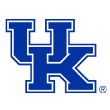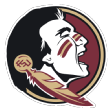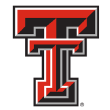Congratulations, coaches of the Sweet 16. You represent the top 4.6 percent of your profession, for now.
To commemorate your success, I've put together this helpful summation of your best coaching qualities. Where applicable, there's even a word on opportunities for improvement.
Here's how these coaches made it this far:
South Region

Bruce Weber, Kansas State Wildcats
Defining quality: Forcing turnovers. Weber's defense overwhelmed both the Creighton and the UMBC offenses, forcing them to give the ball away on 23 percent of their possessions. Not that the Wildcats are a feast-or-famine outfit, mind you. Even when opponents do manage to attempt a shot, K-State has been excellent at forcing misses, particularly inside the arc. Still, Kansas State's ability to prevent opponents from shooting on nearly a quarter of their possessions underscores the level of discomfort that the Bluejays and Retrievers experienced against this defense.
Weakness: Committing turnovers. It's a good thing K-State is taking the ball away, because the Wildcats have also given it away on 22 percent of their own possessions. Part of this might be attributable to the absence of leading scorer Dean Wade. The 6-foot-10 junior sat out the first two tournament games because of an injured foot, and his status for the Sweet 16 is still unclear.
 John Calipari, Kentucky Wildcats
John Calipari, Kentucky Wildcats
Defining quality: Getting youth to jell. Calipari has a talent for attracting talent, of course, but the salient point about this current crop of top-rated players is its extreme youth. That youth was plain to see for the first two-thirds of the season, and then, about a month ago, things changed. Shai Gilgeous-Alexander emerged as one of the best scoring point guards in the nation, and UK as a team found its traditional offensive rebounding soul. Calipari always has talent, but this team has charted an ascendant late-season trajectory unlike any of its predecessors.
Weakness: Talent sequencing. UK has more available roster spots each season than just about any other program, yet the Wildcats choose annually to fill very nearly all those places with one-and-done profiles. That's interesting, because the correlation between performance and roster continuity suggests that even one or two high-quality two-and-through-type players (think Terrence Jones or Tyler Ulis) would hold the potential to pay enormous dividends.
 Porter Moser, Loyola-Chicago Ramblers
Porter Moser, Loyola-Chicago Ramblers
Defining quality: Excellent defense without fouls. No Loyola player has fouled out of a game this season. Not once. (Though this does feel like a streak that's now being consciously cultivated. Aundre Jackson has picked up a fourth foul on no fewer than 11 occasions this season, but never a fifth.) Occasionally a lack of fouling is a euphemism for passive defense, but not in Rogers Park. Clayton Custer is the proud owner of a very nice steal rate, the Ramblers force misses at the rim, and the bottom line for points allowed per possession is exemplary. Moser was an assistant under no less a defensive master than Rick Majerus, and it shows.
Weakness: Shot volume. The Ramblers turn the ball over at an average rate and choose not to pursue offensive rebounds. As a result, Loyola can find itself with fewer chances to score than the opponent.

Eric Musselman, Nevada Wolf Pack
Defining quality: Scoring. Factoring in the quality of the opponents, you can make a case that no offense has been more impressive in the NCAA tournament so far than Musselman's. Playing first against Mo Bamba and Texas, and next against the ferocious defense of Cincinnati, the Wolf Pack have somehow reached the Sweet 16 scoring 1.18 points per possession. Kendall Stephens drained five 3s against the Longhorns, and Cody Martin went off for 25 points against the Bearcats. This is one dangerous offense.
Weakness: Offensive rebounding. This dangerous offense could be even better with a few more chances to score. In two tournament games, Musselman's players have rebounded just 18 percent of their misses. Some second shots would go a very long way with an offense as good as this one.
West Region

Leonard Hamilton, Florida State Seminoles
Defining quality: Scoring on the interior. In a season where the ACC did not lack for teams that could make 2s at a high rate (see for example the program in Durham, North Carolina), Hamilton's offense ranked No. 3 in the league for 2-point accuracy during the conference season. Take a bow, Terance Mann and Phil Cofer. Hamilton also gets bonus points for karma: ACC opponents drained 40 percent of their 3s against FSU, an exceedingly high number that has now corrected down to 35 percent in two tournament games.
Weakness: Scoring on the perimeter. Cofer and PJ Savoy both show very respectable numbers for 3-point accuracy on the season, but as a team FSU made just 33 percent of its tries from beyond the arc in ACC play. True, that level of shooting has improved in the tournament (39 percent). Gonzaga probably will see that improvement, and still make Florida State prove it can really hit those shots.
 Mark Few, Gonzaga Bulldogs
Mark Few, Gonzaga Bulldogs
Defining quality: Roster replenishment. Few just lost three starters from last season's team, not to mention a lottery pick who didn't start. Coming into this season, he had no top-75 freshmen entering the program. Few instead faced 2017-18 with two returning starters (Johnathan Williams and Josh Perkins), guys who came off the bench last season and the nation's No. 83-rated freshman. (It helped that the freshman in question turned out to be Zach Norvell.) Now look: Gonzaga's in the Sweet 16, and a trendy pick to get to San Antonio. For the Dukes and Kentuckys of the world to restock a roster instantly is one thing. For the coach at a West Coast program (for now) in Spokane to do it is quite another.
Weakness: Proclivity for March suspense. On paper, Gonzaga is underseeded as a No. 4, but on the court the Zags were played into the 40th minute by UNC Greensboro. It was a surprisingly close game that was reminiscent of the Bulldogs' close shave against No. 16 seed Southern in the 2013 round of 64.
 John Beilein, Michigan Wolverines
John Beilein, Michigan Wolverines
Defining quality: Adaptability. For years, Michigan received what might be termed bounded praise. The Wolverines, it was said, had an undeniably great offense but these guys nevertheless couldn't or perhaps even didn't wish to really buckle down and play defense. That description no longer suits a team that has reached the Sweet 16 shooting 28 percent on its 3s. Michigan has had to win defensive slugfests against Montana and Houston to get here, and acknowledged offensive wizard Beilein has the best defense of his tenure in Ann Arbor.
Weakness: Shooting? Really? Well, in 2018, at least. Beilein has obviously had some incredibly accurate teams at Michigan, but the two-game perimeter dry spell mentioned above isn't necessarily a shocking outlier. The Wolverines were good but not great in terms of knocking down shots from both sides of the arc in Big Ten play.
 Billy Kennedy, Texas A&M Aggies
Billy Kennedy, Texas A&M Aggies
Defining quality: Total tournament domination on the defensive glass. Kennedy has had outstanding defenses in two of the past three seasons, and now his team's achieving its best results on the defensive boards in particular. In fact, the numbers that Robert Williams, Tyler Davis & Co. have put up against two major-conference opponents in the tournament are a little staggering. The Aggies have pulled down 84 percent of their opponents' missed shots -- and one of those opponents, of course, was North Carolina. The Tar Heels are synonymous with outstanding offensive rebounding, but that did not impress Williams and Davis one bit.
Weakness: Defensive shot volume. Teams playing A&M in the tournament are getting a very high number of chances to score, even if they haven't yet converted those chances. Providence and UNC combined to give the ball away only 12 times in 146 possessions. It hasn't mattered for the Aggies, because those two opponents hit 12 of their combined 51 3-point tries. Still, it's something to track going forward.
East Region
 Jay Wright, Villanova Wildcats
Jay Wright, Villanova Wildcats
Defining quality: Seriously? Do we still have to put it in so many words? Fine, it's shooting. Wright's program is now five years into a run of accuracy from the field the likes of which the sport hasn't seen in at least 15 years. If you've been impressed by how well Villanova has shot over its first two tournament games (and you should be: 53 and 46 percent on 2s and 3s, respectively), bear in mind that, in effective field goal percentage terms, that's almost exactly what the Wildcats just did all season long in Big East play. The only difference now is Mikal Bridges, Donte DiVincenzo, Jalen Brunson and the rest of the Wildcats are shooting even more 3s than usual.
Weakness: Can't this guy even win a fifth consecutive regular-season conference title? (Bill Self cackles with condescending glee.) Just kidding, of course. Xavier uncorked a 15-3 run through the league, and the Wildcats had to be content with second-place at 14-4. Still, in per-possession terms, this was indeed the strongest team in the Big East. Not many weaknesses here.
 Bob Huggins, West Virginia Mountaineers
Bob Huggins, West Virginia Mountaineers
Defining quality: Offensive rebounding. Huggins has always been a big believer in getting second chances on offense, and his team wore out both Murray State and Marshall on the offensive glass. Sagaba Konate has been especially effective in pulling down his teammates' missed shots, both in the tournament and, indeed, all season long. As a result, the Mountaineers have collected 45 percent of their misses in their two tournament wins. Yes, that number might dip against the likes of Villanova, but 18 regular-season games in the rugged Big 12 say the ability is real.
Weakness: Shooting. The Mountaineers had a tough time getting the ball in the basket in Big 12 play, particularly inside the arc. That didn't appear to be a problem in a 94-point eruption against Marshall, of course, but defenses like Villanova and (assuming a West Virginia win there) either Purdue or Texas Tech would figure to pose a much larger challenge.
 Chris Beard, Texas Tech Red Raiders
Chris Beard, Texas Tech Red Raiders
Defining quality: Defense. The Red Raiders make life miserable for opposing offenses. True, that ability went missing rather spectacularly in the last three games of Tech's four-game losing streak in late February. But now it's back, and that's bad news for Purdue. In two wins in Dallas, the Raiders limited Stephen F. Austin and Florida to 0.93 points per possession on 43 percent shooting inside the arc. Numbers like that are in line with a defense that, even with its February dip, rated out as No. 1 in the league during Big 12 play. The Beard-level defense is back.
Weakness: Balance on offense. Texas Tech has hit just 32 percent of its 3s so far in the tournament. The Red Raiders performed at a slightly higher level in Big 12 play (35 percent), but this offense is not one that stretches opposing defenses with barrages of made 3s.
 Matt Painter, Purdue Boilermakers
Matt Painter, Purdue Boilermakers
Defining quality: Explosiveness on offense. Observers tend to see Isaac Haas (when he's healthy) or Matt Haarms (when he's not grooming his hair) and think of the Boilermakers as reliant on 7-footers for offense. The big guys do their bit, but with Carsen Edwards, Dakota Mathias, P.J. Thompson and Vincent Edwards, Painter has all the talent he needs to break a game open from the perimeter. The Boilers have drained 43 percent of their tries from beyond the arc so far in the tournament.
Weakness: Interior defense. That sounds crazy to say, because Haarms is a very good shot-blocker. Nevertheless, Butler converted 60 percent of its 2-point tries in a losing effort and, during conference play, Purdue clocked in merely at the Big Ten average for both 2-point defense and defensive rebounding.
Midwest Region
 Bill Self, Kansas Jayhawks
Bill Self, Kansas Jayhawks
Defining quality: Talent continuity. Self always has a veteran who seems as if he has been around forever. This season that role is being filled by Devonte' Graham, of course. Before Graham, there was Frank Mason III, and before Mason there was Perry Ellis and so on. Even with the old guys, though, Kansas customarily has a one-and-done-track star, too. (Andrew Wiggins, Kelly Oubre, Joel Embiid, etc. This season is the exception to that rule.) It's this blend of experience with, very often, the very top of the mountain in terms of freshman talent that has enabled Self to capture an amazing 14 consecutive Big 12 regular-season titles.
Weakness: Rebounding. Mind you, it's a weakness this season and not across Self's career, but it is a big performance liability right now. The Jayhawks ranked No. 10 in the league in defensive rebound percentage during Big 12 play.
 Brad Brownell, Clemson Tigers
Brad Brownell, Clemson Tigers
Defining quality: Defending at the rim. Brownell put an excellent defense on the floor all season long, and indeed rode that D after Clemson lost Donte Grantham to a knee injury in January. Still, even by Tigers standards, the defense has taken things to another level in the tournament. New Mexico State and Auburn converted just 35 percent of their 2-point attempts against Clemson. Elijah Thomas and Aamir Simms recorded three blocks apiece against Bruce Pearl's team.
Weakness: Scoring at the rim. It certainly hasn't manifested itself yet in the tournament, and, who knows, maybe this is one wrinkle that Brownell has ironed out. Then again, NMSU and Auburn aren't the tallest of teams, and, during ACC play, Clemson ranked No. 10 in the league in 2-point FG percentage.
 Jim Boeheim, Syracuse Orange
Jim Boeheim, Syracuse Orange
Defining quality: Schematic loneliness. The 2-3 zone keeps claiming victims in March, players like Oshae Brissett and Marek Dolezaj make the scheme work on the court and, if anyone knows how to tweak the zone for maximum effect, goodness knows it's Boeheim. Still, part of the scheme's power surely derives from its singularity. With Duke in 2018 being one prominent exception, not many teams use a zone defense, and opposing offenses just aren't experienced in facing one. Boeheim has been content to do things his own way, and it has paid off handsomely.
Weakness: Defensive rebounding. Michigan State pulled down a truly staggering 56 percent of its misses in its round of 32 loss to the Orange. The zone always has been reputed to hurt a team's defensive rebounding. That's probably a little too simple, but this season the description certainly fits.
 Mike Krzyzewski, Duke Blue Devils
Mike Krzyzewski, Duke Blue Devils
Defining quality: Schematic flexibility. Krzyzewski did something that would be simple for most adults, but in the rarefied world of college basketball head coaches it's a bit more unusual. Duke's defense wasn't working, so Coach K changed it. That's not the usual script (you're supposed to yell at your players and talk about commitment and effort), but it proved to be a wise move. The Blue Devils' zone defense gets the job done, and, then Duke turns around and buries opponents with its offense. That, by the way, would be the offense that's making 63 percent of its 2s in the tournament.
Weakness: Lack of suspense. In a tournament marked by more than one dramatic upset, Krzyzewski and Duke have chosen instead to go the Villanova route and bury their first two opponents with little fuss. That's not the most entertaining option, but Blue Devils fans will take it.
